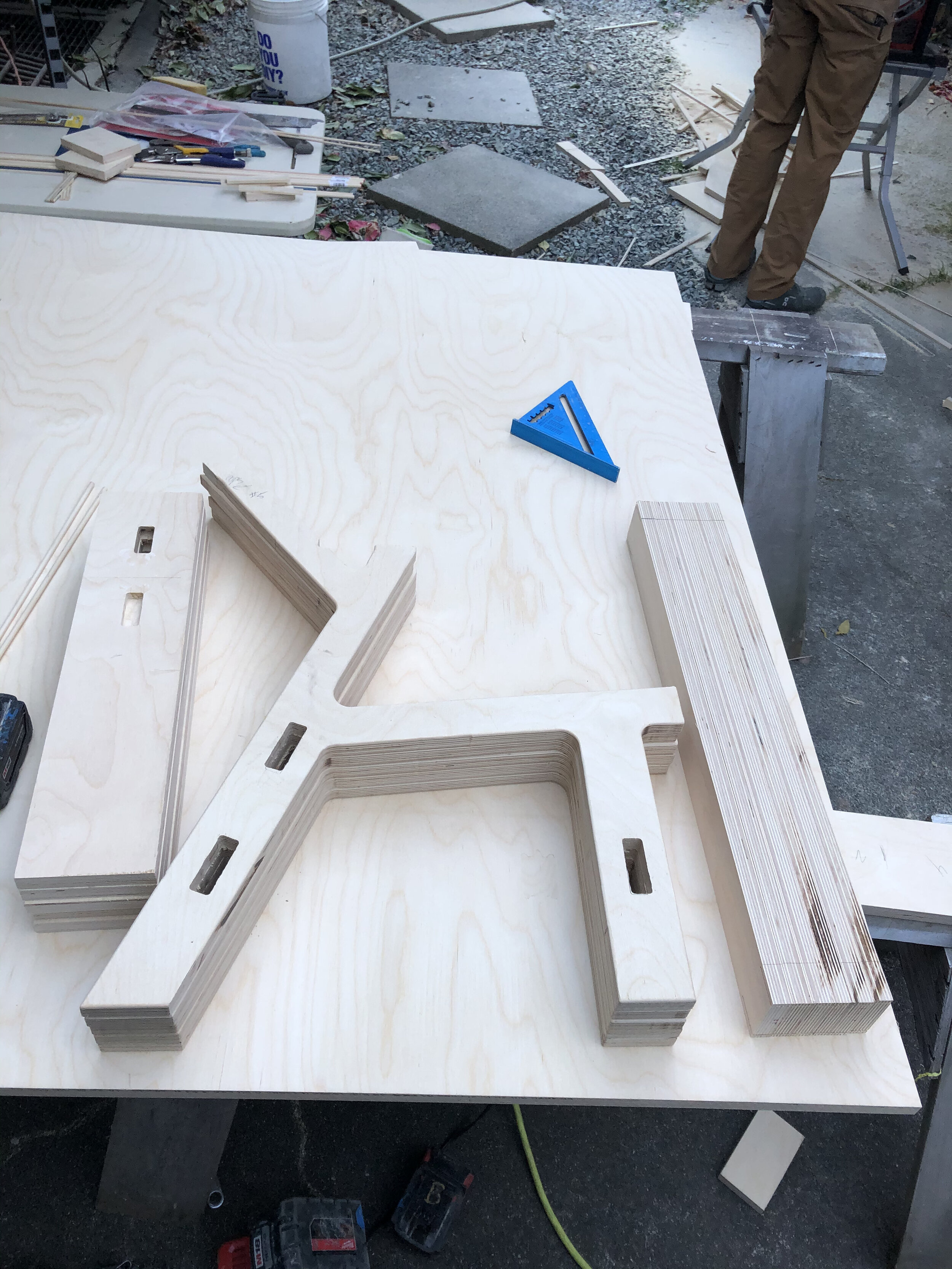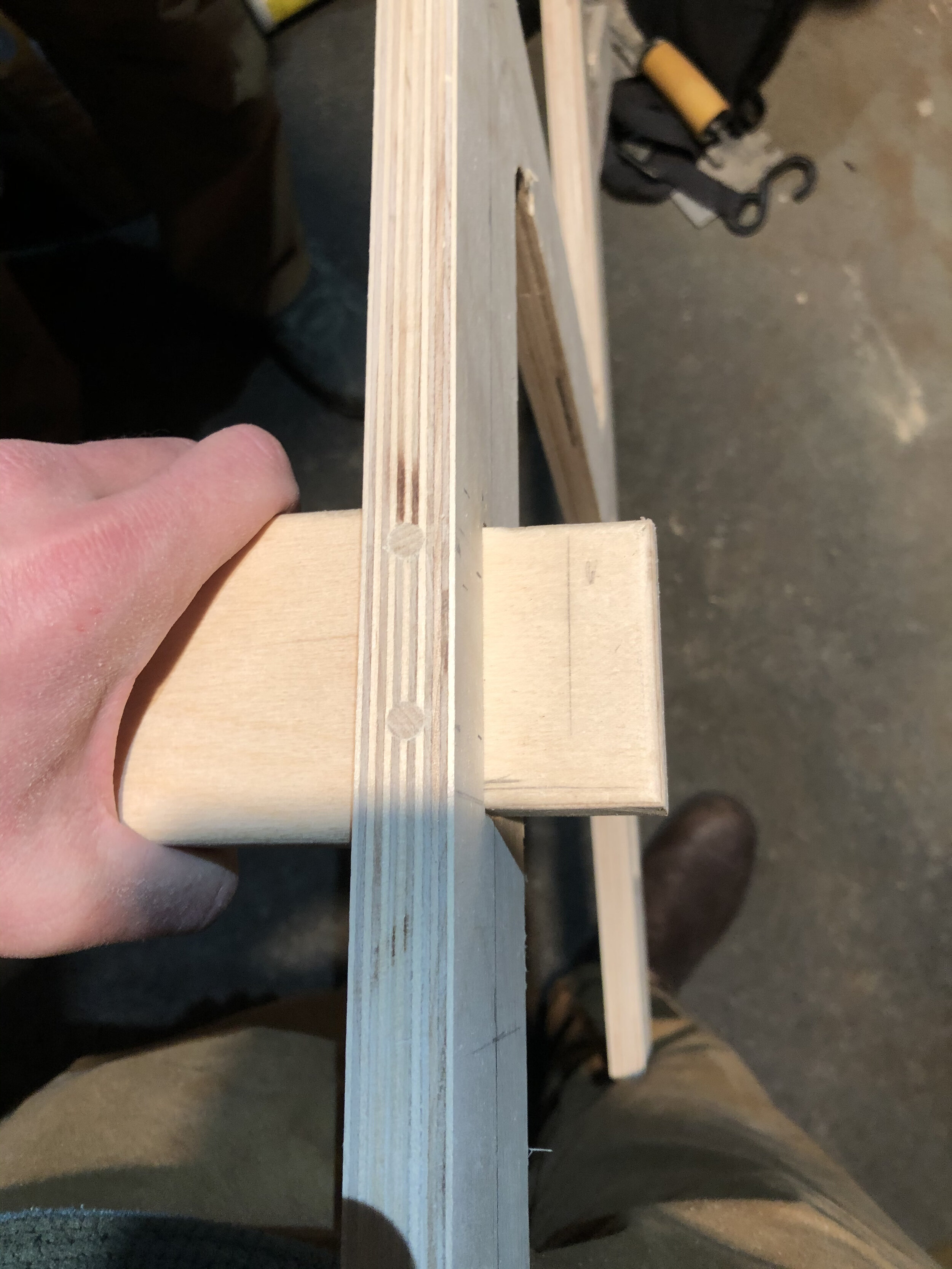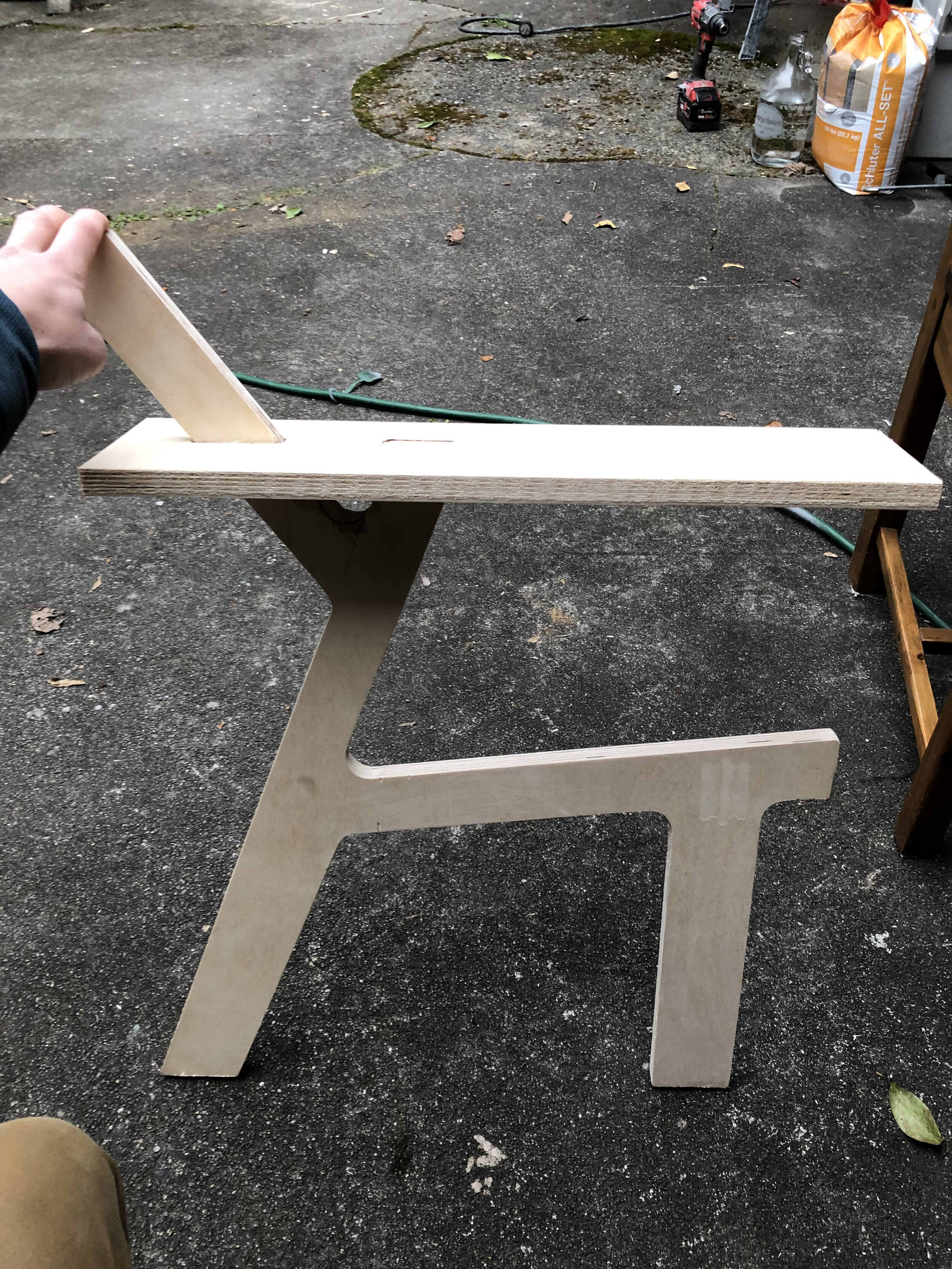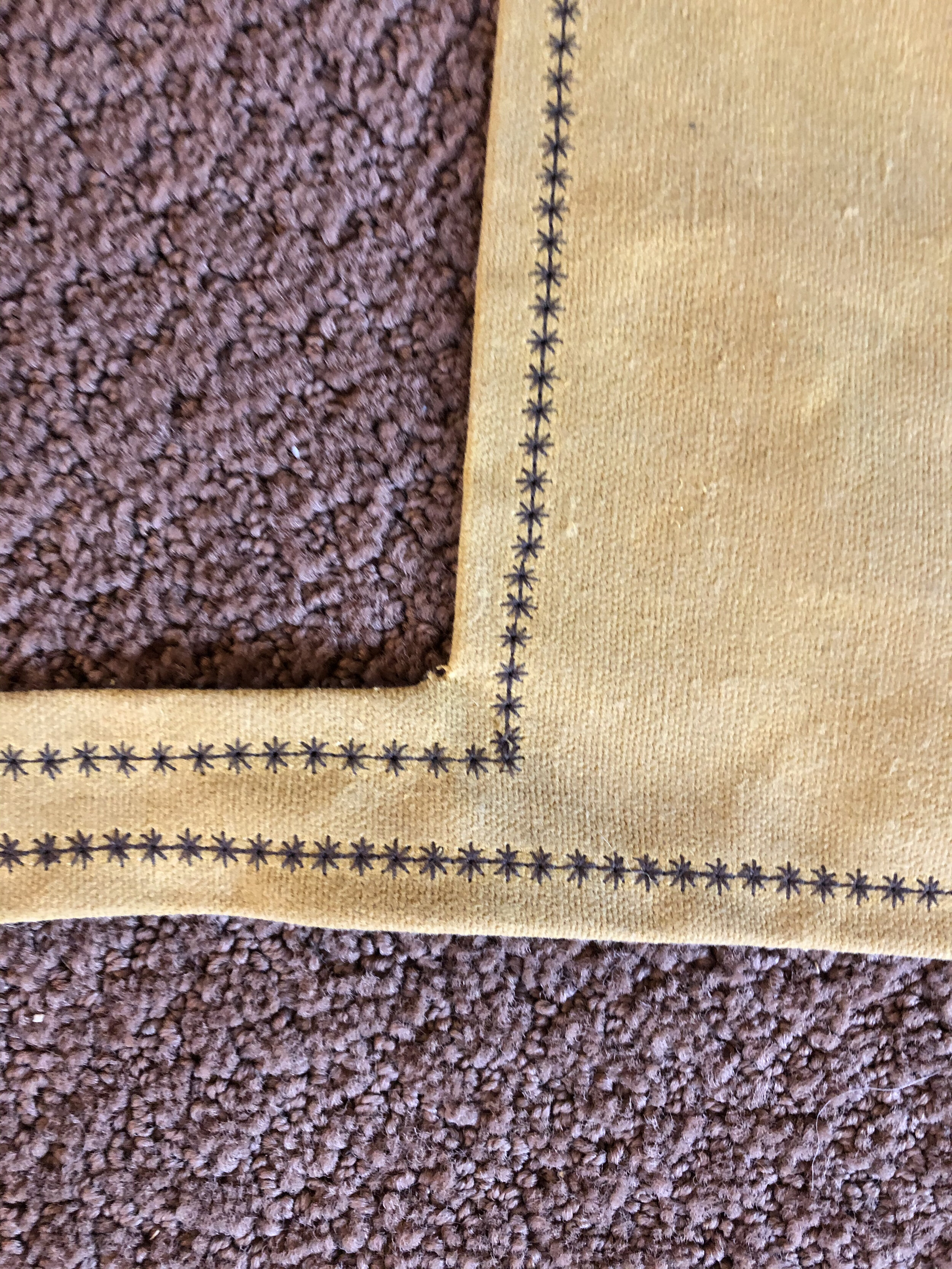Something I learned about Danish Furniture designers is that many do not start from scratch, but instead create their own interpretation of other famous designs.
I decided I wanted to follow the same process with my favorite chair, The Spanish Chair by Børge Mogensen. I worked to understand the chair, through sketching, measuring, and sitting in it. I then worked to create my own form based on similar proportions. Once I settled on form, I created more detailed working drawings.
Once I had my detailed drawings, I crafted my first sketch model, shown above. The cardboard represents Birch Plywood and the white paper represents Waxed Canvas seat and back. After having my set design, I went about full-scale modeling and beginning the final production. The final design challenge I would need to solve was the joinery. I purchased the Baltic Birch and began experimenting at full scale.



Above are some images showing the cut-out pieces of the sides, arms, and crossbars. Also pictured is the joinery that I created, through slotting and wooden dowels.
Once I had the frame assembled, I made a temple for the canvas with a sheet of plastic. I then sanded and applied a clear coat on the wood so that it would have a slight gloss and be protected from use, but still highlight the natural look of the Baltic Birch. With the layout complete, I stitched up the canvas with a decorative stitch, and attached the ring-buckle hardware.
My final chair, while very much inspired by The Spanish Chair, in proportion and sitting position, is very much its own. It is constructed simply out of plywood and canvas, instead of dimensional lumber and leather. I followed the path I learned from many Danish designers, inspired by a classic, but created my own.










